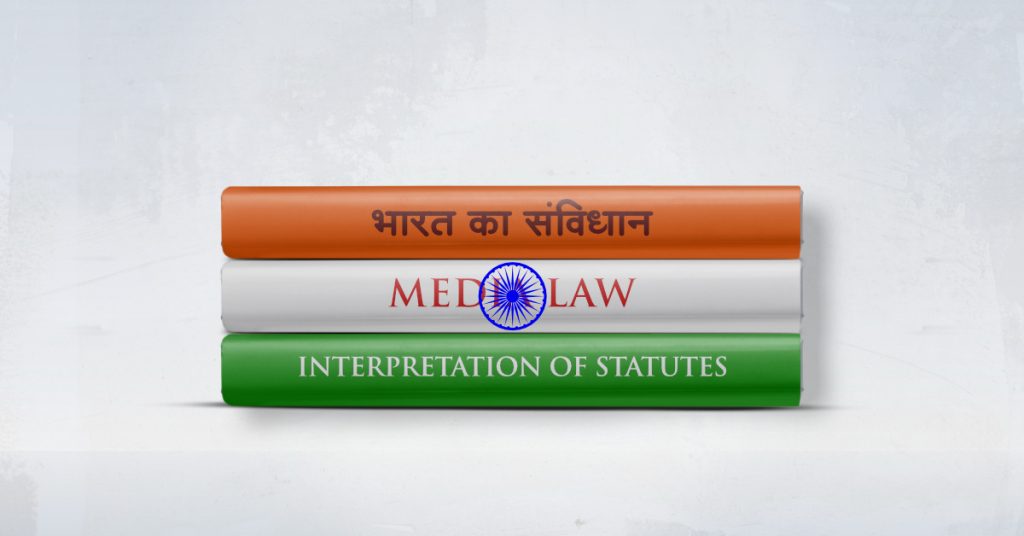
The Constitution of India is the supreme law of the land. It defines how the country is governed and how power is distributed. It also protects the rights of citizens. In this post, we’ll break down the most important concepts you need to know—clearly and concisely.
What is Constitutional Law?
Constitutional law is the body of rules that outlines:
- The structure of government
- The distribution of powers
- The rights of individuals
In India, this law comes mainly from the Constitution, which came into force on 26 January 1950.
It is both rigid and flexible, and can be amended but with certain limitations.
1. Sources of Constitutional Law in India
India’s constitutional law primarily comes from:
- The Constitution of India
- Judgments of the Supreme Court and High Courts
- Constitutional amendments
- Doctrines developed by courts
Case law plays a big role in shaping the meaning of constitutional provisions.
2. Structure of Government
India follows a parliamentary system with seperation of powers between:
- Legislature (Parliament): Makes laws
- Executive (Government/President/PM): Enforces laws
- Judiciary (Supreme, High, and Lower Courts): Interprets laws
Although the three branches are separate, they often interact and check each other’s powers.
3. Salient Features of the Constitution of India
Promotion of Social Justice and Equality
– Aims to remove inequality and promote justice through affirmative actions and welfare policies.
Lengthiest Written Constitution
– It is the longest written constitution in the world, covering extensive details of governance.
Drawn from Multiple Sources
– Borrowed features from various world constitutions like those of the UK, USA, Ireland, etc.
Blend of Rigidity and Flexibility
– Some provisions require special procedures to amend, while others are easier to change.
Federal System with Unitary Bias
– It divides power between the Centre and States but favours the Centre in practice.
Parliamentary Form of Government
– The executive is accountable to the legislature, and the President is the nominal head.
Fundamental Rights
– Guarantees basic rights to citizens, enforceable by the Supreme Court and High Courts.
Directive Principles of State Policy
– Non-enforceable guidelines aimed at establishing social and economic justice.
Secular State
– No official state religion; all religions are treated equally by the State.
Independent Judiciary
– Judiciary is free from executive and legislative control, with powers of judicial review.
Single Citizenship
– Only Indian citizenship is granted, regardless of the state a person belongs to.
Universal Adult Franchise
– Every citizen aged 18 and above has the right to vote without discrimination.
Fundamental Duties
– Citizens are expected to follow 11 duties introduced by the 42nd Amendment.
Emergency Provisions
– Allows the Centre to assume greater power in times of national crisis.
Special Provisions for Certain States and Regions
– Certain states and tribal areas have unique constitutional protections and arrangements.
4. Classification of Fundamental Rights in India
The Fundamental Rights are guaranteed under Part III of the Constitution and are enforceable by the courts. They protect the basic freedoms and dignity of individuals.
Here’s how they are classified:
| Category | Articles | Key Focus |
| Right to Equality | 14–18 | Equal treatment and prohibition of discrimination |
| Right to Freedom | 19–22 | Basic personal freedoms and protections |
| Right against Exploitation | 23–24 | Human dignity and ban on forced labour/child labour |
| Right to Freedom of Religion | 25–28 | Religious liberty and secularism |
| Cultural and Educational Rights | 25–28 | Minority rights in culture and education |
| Right to Constitutional Remedies | 32 | Right to seek justice for Fundamental Rights violations |
5. Amendment of the Constitution
An amendment is a formal change or addition made to the Constitution. It allows the Constitution to be updated, improved, or modified over time without rewriting the entire document.
Important Amendments in the Indian Constitution:
| Amendment No. | Year | Key Features/Impact |
|---|---|---|
| 1st | 1951 | Added restrictions on freedom of speech and validated land reforms |
| 24th | 1971 | Affirmed the right to property is not a fundamental right |
| 42nd | 1976 | Known as the “Mini Constitution”; added Fundamental Duties; expanded Directive Principles; strengthened Centre |
| 44th | 1978 | Removed Right to Property from Fundamental Rights; made it a legal right |
| 52nd | 1985 | Made Right to Education a Fundamental Right (later 86th Amendment gave Article 21A) |
| 61st | 1989 | Introduced Goods and Services Tax (GST) concept (implemented later) |
| 73rd & 74th | 1992 | Panchayati Raj and Urban Local Bodies given constitutional status |
| 86th | 2002 | Made education a Fundamental Right for children aged 6–14 (Article 21A) |
| 101st | 2016 | Increased reservation for SC/ST in Lok Sabha and State Assemblies |
| 103rd | 2019 | Introduced 10% reservation for Economically Weaker Sections (EWS) in general category |
| 105th | 2021 | Abolished Legislative Council in Jammu & Kashmir (following reorganisation) |
5. Judicial Review
India’s Supreme Court and High Courts have the power of judicial review.
This means they can:
- Strike down any law or executive action that violates the Constitution
- Ensure laws respect Fundamental Rights and constitutional provisions
This is based on Article 13 and upheld in several landmark judgments.
6. Right to Constitutional Remedies (Article 32)
What is the Right to Constitutional Remedies?
- It is the right of citizens to move the Supreme Court directly if their Fundamental Rights are violated.
- This right ensures that Fundamental Rights are enforceable and protected.
How does it work?
- If any Fundamental Right is violated, a citizen can file a writ petition in the Supreme Court.
- The Supreme Court can issue writs to protect those rights.
Types of Writs available:
| Writ | Purpose |
|---|---|
| Habeas Corpus | To produce a person unlawfully detained before the court |
| Mandamus | To order a public official to perform a duty |
| Prohibition | To stop a lower court or authority from acting beyond its jurisdiction |
| Certiorari | To quash the order or decision of a lower court or authority |
| Quo Warranto | To question the legality of a person holding a public office |
7. Important Constitutional Doctrines (Developed by Indian Courts)
- Basic Structure Doctrine – Some parts of the Constitution cannot be altered (Kesavananda Bharati case)
- Doctrine of Eclipse – A law that violates fundamental rights becomes inactive but can revive if the Constitution changes
- Doctrine of Severability – Unconstitutional part of a law can be removed; the rest may survive
- Doctrine of Pith and Substance – Determines legislative competence in case of overlap
- Colorable Legislation – Prevents legislature from doing indirectly what it cannot do directly
- Doctrine of Proportionality – Any restriction on rights must be reasonable and not excessive
To learn more about Constitutional Law, Check out these must-read books.
















